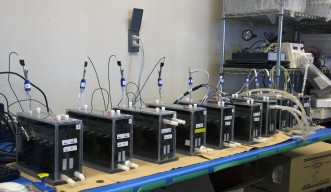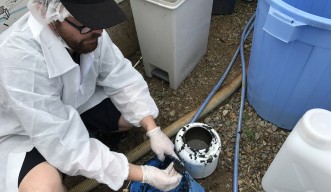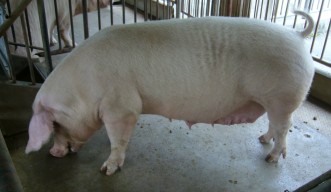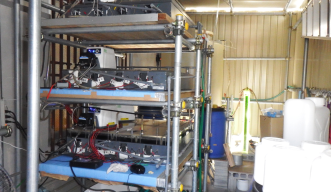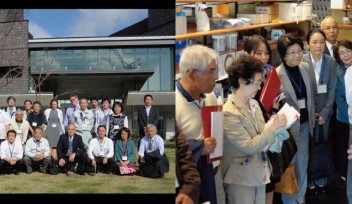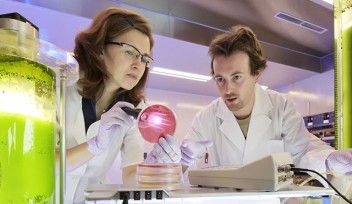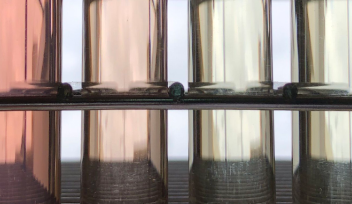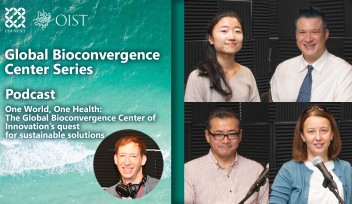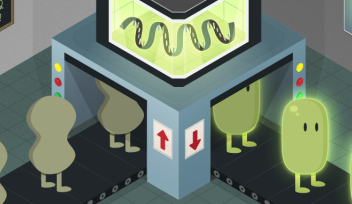Down and Dirty: Cleaning Okinawan Pig Farm Wastewater with Microbial Fuel Cells
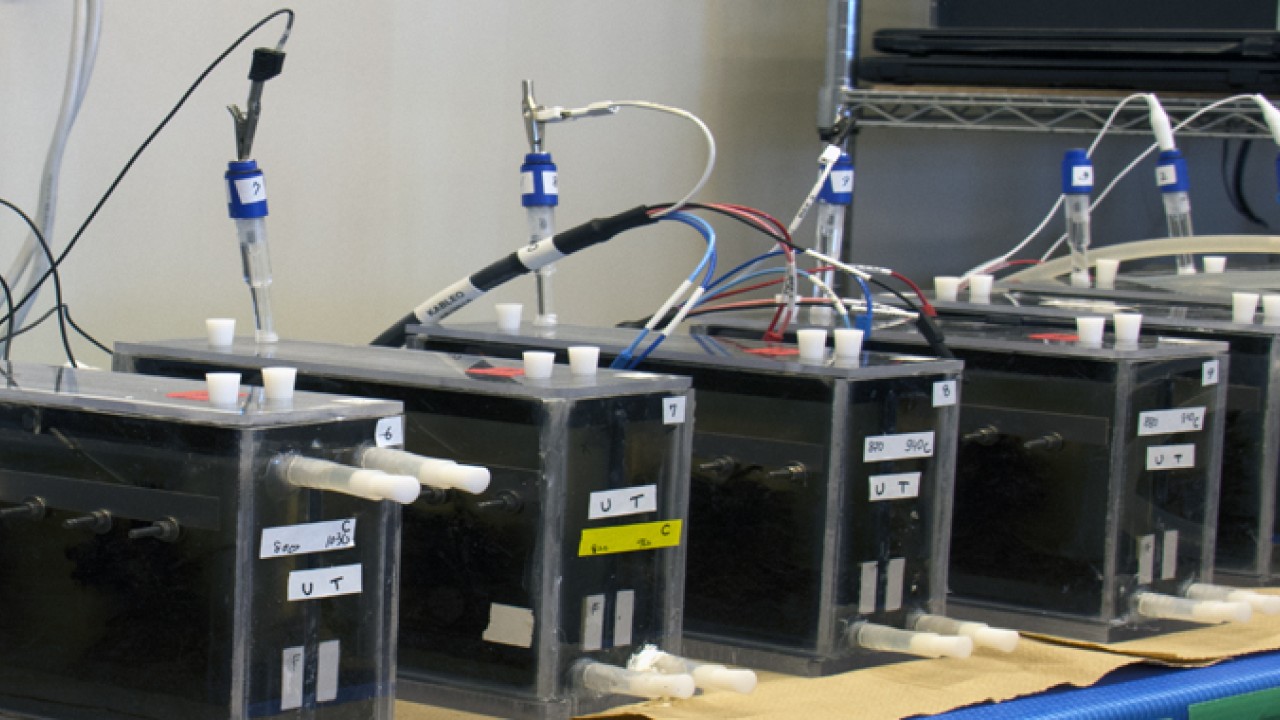
One of the greatest threats to the environment today is wastewater left over from production activities. Agricultural practices, such as pig farming, produce a large amount of wastewater containing organic contaminants, malodorous gases, and other substances that are damaging to the water supply. Usual methods of treating and recycling such wastewater include aeration, applying it as fertilizer to other farming areas or confining it to specialized ponds and wetlands to undergo natural cleansing processes.
However, in areas such as Okinawa, Japan, with limited land resources and a lot of pig farms, the amount of wastewater produced outweighs the land available for treatment and recycling. As such, there is a great need to find better, faster, and cheaper methods of wastewater treatment, which is part of what birthed the Biological Systems Unit at the Okinawa Institute of Science and Technology Graduate University (OIST). Using a promising wastewater treatment technology, called a microbial fuel cell (MFC), the Unit aims to help the island—and by proxy, other locations with similar wastewater issues—reduce its wastewater burden.
An MFC is, in a sense, an anaerobic container of concentrated bacteria that feed on biodegradable material and bacteria found in wastewater. It operates via bio-electrochemistry, meaning that the energy used to run the cell is generated from electron transfer from the bacteria to electrodes within the device—no outside energy source is needed. When wastewater passes through an MFC, the “feeding” bacteria digest the organic compounds in the wastewater and cleaner water comes out the other side. In addition, the digesting process expels energy which is converted into usable electricity. The end result is a device that cleans wastewater and generates electricity while doing so.

“[The cells are] low maintenance, low cost, and don’t have a lot of moving parts,” explains David Simpson, a technician in the OIST Biological Systems Unit. This is important for those who do not have the time or resources to maintain expensive treatment equipment—a description that fits the bill for harried workers such as pig farmers.
“Ideally what we’re working toward is to put the fuel cell [where you need it] and forget about it,” explains Professor Igor Goryanin, who leads the Unit at OIST. “It will monitor and treat the wastewater by itself.”
Already the OIST researchers have developed MFCs with the ability to function for long periods of time without breaking down or “gunking” up. Now, in a paper published in Scientifica, they have identified a way to strengthen the devices’ performance too. Before running an MFC, it must first be cultured, or inoculated, with the “digesting” bacteria. To do this, one shovels sludge containing bacteria into a part of the MFC called the anode. Here, the desired bacteria are propagated for later use in wastewater treatment.
In their study, the OIST researchers hypothesized that an MFC will be better at treating wastewater if the anode is prepared with sludge that has been in prior contact with that particular waste stream. They tested this hypothesis at a local pig farm managed by the Okinawa Prefectural Livestock and Grassland Research Center in Nakijin, a village in the northern part of the island. They used sludge collected from a swine wastewater receiving tank at this farm, as well as sludge collected from a wastewater reactor at a local brewery. In comparing the productivity of the two types of MFCs, they found that the swine sludge MFC treated the pig farm wastewater much better than the one from the local brewery. The markers the researchers used to judge this were the removal rate of chemical oxygen demand and volatile fatty acids—contaminants of the water supply—as well as electricity generation.
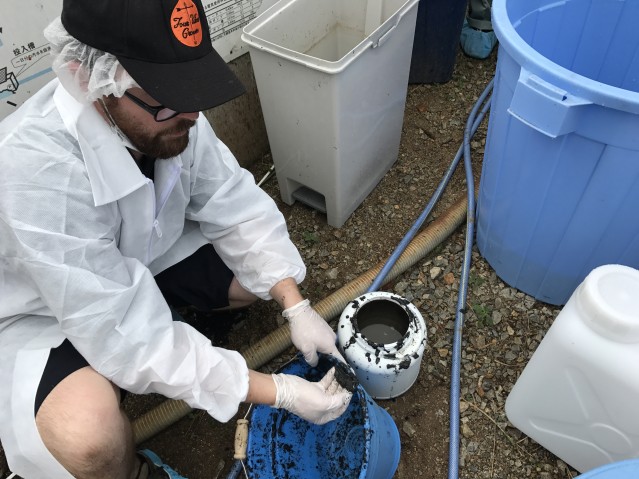

In addition to the pig farm, the Unit has MFCs placed at other sites in Okinawa and around the world—including an Awamori distillery in Okinawa, a whisky distillery in Scotland, and a winery in California, United States. In California they are using the treated wastewater for irrigation. The MFCs at the Awamori distillery site have been operating for about 5 years. Simpson explains that, at the moment, these MFCs at the Awamori site are cleaning the water to a level that allows for safe discharge into sewers.
“[We can] remove organics to a high degree, with about 90 percent efficiency,” Simpson explains. “But treating it releases ammonia and phosphates.” These are chemicals that can cause oxygen depletion in water as well as harmful algal blooms. “So we are trying to close the loop.” They are working to harvest the nutrients—phosphate, ammonia—at the lab scale.
The Unit is currently working with collaborators in the Okinawa Prefectural Livestock and Grassland Research Center and the Okinawa Environment Science Center, with funding from the Okinawa Prefecture Government, to develop a solution for capturing and removing the nutrients, potentially leading to valuable and sustainable byproducts for fertilizers.

“The idea of wastewater treatment is to eventually help those countries without access to clean drinking water,” Professor Goryanin explains, “perhaps by cleaning water to be used in potable wells.”
For now, the OIST researchers will continue to test, run, and optimize their MFCs with the hope that one day they may ease the globe’s wastewater burden.
Specialties
Research Unit
For press enquiries:
Press Inquiry Form










